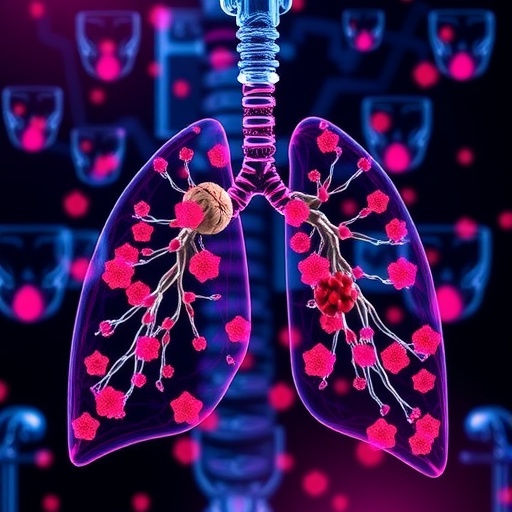1. Anonymous essay says sometimes ‘choice’ is a lie
Impassioned author explains how extreme politics can warp patient care
Abstract: http://annals.
URLs go live when the embargo lifts
An anonymous essay published in Annals of Internal Medicine says that sometimes choice is just a lie. The author vividly describes caring for a pregnant woman who would be forced to carry a baby to term that would soon be born without a skull or brain. While the baby’s condition was certainly fatal, state laws prohibited caregivers from ending the pregnancy.
According to the author, this case shows how extreme politics can warp patient care. The baby’s diagnosis was not ambiguous. It would be born without a brain and would not survive. But because of strict anti-abortion laws in the author’s state, all they could do was watch the patient leave OB triage, both pregnant and grieving, only to return to the hospital a few days later to give birth prematurely to the doomed infant.
Physicians are used to doing everything they can to save a child because that’s what is expected. But, according to the author, sometimes all they can do is provide compassion.
Notes and media contacts: For an embargoed PDF or to speak with the editor of Annals of Internal Medicine, please contact Angela Collom at [email protected].
2. American College of Physicians issues ethical guidance on professional duties and principles for responding to physician impairment
Physicians should be rehabilitated and reintegrated into medical practice whenever possible without compromising patient safety
Abstract: http://annals.
Editorial: http://annals.
URLs go live when the embargo lifts
The American College of Physicians (ACP) issued ethical guidance for physicians on how to respond when a colleague is impaired by illness, substance use disorder, medical or mental health condition, profound fatigue, or any other situation that affects their ability to carry out patient care responsibilities safely and effectively. ACP’s position paper is published in Annals of Internal Medicine.
Physicians share a commitment to care for ill persons, including each other. Having an illness or other condition does not necessarily mean that a person is impaired, but when physicians become impaired and are unable to practice competently, they have a duty to seek medical help and assistance in caring for their patients. When they cannot or do not do so, the profession and individual physicians have a responsibility to safeguard the welfare of patients and assist colleagues in obtaining help by identifying and reporting colleagues who might be impaired. Colleagues should take a stepwise approach, starting with a sensitive but direct discussion with the person if patient harm is unlikely and progressing to a report to licensing boards or clinical supervisors if patient harm is imminent or suspected.
ACP outlines five position statements covering the professional duties of competence and self-regulation, the distinction between functional impairment and potentially impairing illness, physician health programs, and physician wellness and well-being. The paper’s appendix includes a rationale for each position and suggestions for implementation.
In an accompanying editorial, Jeffrey H. Samet, MD, MA, MPH, writes: “These guidelines recognize the enormous investment required to develop well-trained physicians and that the community at large benefits when, instead of being asked to ‘heal thyself’ in periods of impairment, this talented resource is supported and treated as needed.”
Notes and media contacts: For an embargoed PDF or to speak with someone from ACP, please contact Angela Collom at [email protected] or Steve Majewski at [email protected].
3. Buprenorphine underused in states with high opioid use disorder-related mortality rates
Treatment denial was especially high among those who were uninsured or were insured through Medicaid
Abstract: http://annals.
Editorial: http://annals.
URLs go live when the embargo lifts
An audit study found that buprenorphine-naloxone (“buprenorphine”) was underused in states with high opioid use disorder-related mortality rates, particularly for those with Medicaid coverage. However, wait times at publicly-listed prescribers were not long, implying that opportunities may exist to increase treatment access using current prescribers. Findings from a “secret shopper” type study are published in Annals of Internal Medicine.
Improving access to treatment for opioid use disorder is a national priority, but little is known about the barriers encountered by patients seeking buprenorphine treatment. Understanding the nature of these patient-facing barriers is crucial to design policy that can be effective at getting more patients access to evidence-based addiction treatment.
Researchers from the Harvard T.H. Chan School of Public Health along with colleagues from Harvard Medical School and the Johns Hopkins Bloomberg School of Public Health used simulated patient interactions to assess real-world access to buprenorphine treatment for uninsured or Medicaid-covered patients reporting current heroin use. Each provider was called twice, once by a caller posing as a Medicaid enrollee and once as an uninsured patient. Among 1,092 “patient” contacts with 546 buprenorphine prescribers, 36 to 48 percent of callers who reported current heroin use were denied an appointment, and only 50 to 66 percent of clinicians booking a new appointment allowed buprenorphine introduction on the first visit. A smaller percentage of callers with Medicaid coverage than those paying with cash were offered appointments. The researchers noted that wait times at prescribing clinics were generally less than 1 to 2 weeks, suggesting that the most prominent barrier to buprenorphine access beyond scarcity of clinicians accepting new patients was underuse of the existing treatment capacity in these areas.
According to the authors of an accompanying editorial from the University of Michigan School of Medicine, Veterans Affairs Ann Arbor healthcare System, and Institute of Health Policy and Innovation, the most pressing challenge revealed by the research is connecting patients to willing prescribers. An updated registry with a more accurate list of prescribers could help improve treatment access and care coordination. The authors also suggest more research to understand the nature and effect of self-pay, cash-only practices in filling the gaps in treatment access, as many patients may not be able to afford to pay out-of-pocket.
Notes and media contacts: For an embargoed PDF, please contact Angela Collom at [email protected]. To speak with the lead author, Michael L. Barnett, MD, MS, please contact Todd Datz at [email protected].
4. Peripherally inserted central catheters overused in patients with CKD
Abstract: http://annals.
Editorial: http://annals.
URLs go live when the embargo lifts
Despite guidelines that recommend against the use of peripherally inserted central catheters (PICCs) in patients with chronic kidney disease (CKD), the practice is common in the hospital setting, including in some patients receiving dialysis. Findings from a prospective cohort study are published in Annals of Internal Medicine.
Vascular access is critical for patients with CKD, who may require renal replacement therapy. Autogenous arteriovenous fistula (AVF) is the preferred choice for long-term hemodialysis and is more likely to succeed if veins have not previously been compromised by vascular catheter, such as PICC. Existing guidelines endorse avoiding PICC placement in patients with CKD because PICCs damage veins, cause stenosis of central vessels and reduce success rates for creation of AVFs. However, some data suggest that PICC use in patients with CKD is common in the hospital setting.
Researchers from the University of Michigan studied health records across 52 hospitals participating in the Michigan Hospital Medicine Safety Consortium to describe the frequency of and characteristics associated with PICC use in more than 20,500 hospitalized patients with stage 3b or greater CKD. The researchers found that approximately 1 in 4 PICCs was inserted in a patient with CKD, including in some receiving hemodialysis. Approximately 25 percent of such PICCs were used for durations shorter than 5 days, an interval in which alternative venous access devices are safer and more appropriate. The researchers also found that complications including blood clots and infection were common.
According to the author of an accompanying editorial from Case Western Reserve University School of Medicine at MetroHealth Medical Center, these data affirm that too little attention has been given to vein protection guidelines for patients with CKD. PICC avoidance is crucial, and should be noted in patient electronic medical records. Since vein protection often depends on decision making by non-nephrologists care for complex patients with CKD, education and engagement of the general medical community are critically important.
Notes and media contacts: For an embargoed PDF, please contact Angela Collom at [email protected]. To speak with the lead author, Vineet Chopra, MD, MSc, please contact Kara Gavin at [email protected] or Jason Engle at [email protected].
5. Lung cancer screening based on higher risk thresholds may be more efficient than current USPSTF guidelines
Current risk thresholds do not account for changes in population smoking behaviors
Abstract: http://annals.
URLs go live when the embargo lifts
Screening for lung cancer based on new risk thresholds could prevent more deaths than current United States Preventive Services Task Force (USPSTF) guidelines. The USPSTF is considering recommending externally validated risk assessment models for screening. Findings from a brief research report are published in Annals of Internal Medicine.
Researchers from the National Cancer Institute, National Institutes of Health, compared lung cancer screening guidelines from the United States Preventive Services Task Force (USPSTF), which uses smoking history and age, the National Comprehensive Cancer Network (NCCN), which uses a threshold of 1.3 percent 6-year risk of incident lung cancer, as well as a third approach with a higher 2.19 percent risk threshold. They determined that a 2.19 percent risk threshold would select the same number of ever-smokers, but at higher risk, compared to the USPSTF guidelines. As a result, the 2.19 percent threshold was projected to prevent 14 percent more lung cancer deaths than the USPSTF guidelines, while screening the same number of people. In contrast, the NCCN threshold was projected to screen 57 percent more people (4.6 million) while preventing 37 percent more deaths (15,230) than USPSTF.
Screening efficiency is measured by the number of ever-smokers screened to prevent one death. The authors project that 194 would need to be screened by the USPSTF guidelines to prevent one death. This improves to 169 by the 2.19 percent threshold, but worsens to 222 by the 1.3 percent NCCN threshold.
The reason for the differences in performance between USPSTF guidelines and the NCCN threshold is rooted in the fact that the NCCN threshold was based on data from 1993-2001, when there were more heavy smokers in the U.S., compared to 2015. According to the researchers, these findings suggest that risk thresholds should be reevaluated regularly; this will ensure they still maximize the number of deaths prevented and minimize harms as population characteristics change.
Notes and media contacts: For an embargoed PDF, please contact Angela Collom at [email protected]. To speak with the lead author, Rebecca Landy, PhD, please contact the NCI Press Office at [email protected].
###
Also New in this issue:
Would You Recommend PSA Screening for this Patient?
Risa B. Burns, MD, MPH; Aria F. Olumi, MD; Douglas K. Owens, MD; Gerald W. Smetana, MD
Beyond the Guidelines
Abstract: http://annals.
Preventing Firearm-Related Deaths and Injuries
Rocco Pallin, MPH; Sarabeth A. Spitzer, BA; Megan L. Ranney, MD, MPH; Marian E. Betz, MD, MPH; Garen J. Wintemute, MD, MPH
In the Clinic
Abstract: http://annals.
Media Contact
Angela Collom
[email protected]





